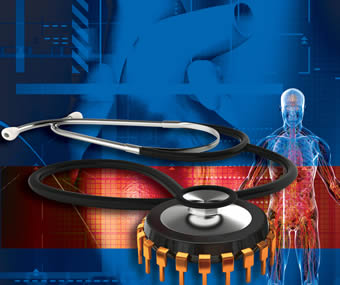Reducing risk factors
All Programmable FPGAs and SoCs give medical device manufacturers the flexibility needed to satisfy stringent regulatory requirements and manage the design process efficiently. Aaron Behman, Director, Corporate Strategy & Marketing, Embedded Vision, Xilinx explains
The world’s growing and ageing population is driving demand for more affordable, flexible, highly integrated and reliable medical technology to support healthcare services. The medical electronics market is expected to reach $212bn by 2019, including $6bn of semiconductors.
Manufacturers of devices ranging from patient monitors, ventilators, scanners and X-ray machines, to defibrillators, endoscopes, infusion pumps and analysers face an increasingly competitive marketplace, but must also ensure that their equipment conforms to stringent safety and reliability regulations. The shifting regulatory environment is often cited as the single biggest challenge medical equipment companies face today.
The approval cycle for new equipment for non-patient contact applications usually takes about half a year. On the other hand, equipment that performs more critical functions and must touch a patient’s body usually takes about two years to gain approval for release to the market. Even established applications like patient monitoring or ultrasound can take 12 to 18 months, typically because so much documentation and testing is required. The manufacturer must create a technical file that supports the product, and submit the documentation to the regulator for review. The goal is to gain approval on the first try, because the second review is even more detailed and can take much longer.
Design for risk mitigation
Many of today’s new medical device designs require embedded processors. Even though the compute power may be relatively low, a certain amount of software is involved. Regulatory bodies worldwide scrutinise both hardware and software, but tend to look hardest at software as the aspect most likely to cause the system to fail into an unknown state.
The challenge for the developer is to demonstrate to regulatory bodies and customers that the device is safe and will not hurt patients. However, as devices become more complex to perform multiple tasks, the code also becomes more complex, and hence more difficult to understand and debug. The increased potential for failure raises the level of risk, even for systems that are non-life critical.

FPGAs and programmable SoCs (System-on-Chip) enable medical equipment manufacturers to take functions of their system that must be reliable and implement them in the logic of the device while placing other, less critical functions in software. This effectively lowers the risk of failures and accelerates regulatory approval.
Xilinx has a set of solutions for medical equipment manufacturers, which is built around All Programmable FPGAs and Zynq SoCs, and the new Zynq UltraScale+ MPSoC with additional safety and security features. There is also silicon IP, software stacks from Xilinx and members of the Xilinx Alliance Program, and certified design tools and methodologies to ensure quality, reliability and redundancy.
The SDSoC development environment enables designers to implement critical functions in Zynq SoC logic instead of in software, and also allows adding layers of redundancy for extra reliability. Less critical functions can be run on the Zynq SoC’s ARM processing system. The tool also generates reports that can be used to demonstrate the signal paths, predictable outcomes and fail-safes to regulators.
To support their use in medical applications, the devices, Vivado Design Suite and IP serving the medical device market meet the relevant quality and safety standards including ISO 60601 3rd edition and ISO 13485 medical device design standards, and international standards including IEC 61508 covering functional safety and IEC 62304 for RTOS integration. These approvals help customer end product designs move quickly through the regulatory processes. As an example, Alliance member QNX’s RTOS has already been pre-certified for IEC 62304. Using this on the Zynq SoC can shorten the end product certification process by about six months.
Platform approach
With increases in regulatory burden and time-to-market pressures, many medical companies today are employing platform design techniques and learning to take a scalable approach to product lines, for example to offer portable, low end, mid-range and high end versions.
By designing one platform based on the Zynq SoC for the high end, the same hardware can be used at each level and the functions scaled to suit the needs of each end market. Since medical devices are typically on the market for ten to 15 years, which is much longer than the two or three year lifespan typical of consumer products, a platform approach built around the Zynq SoC has advantages over a platform composed of multiple discrete parts. For example, it can save going through the regulatory process again if a chip becomes unavailable and must be changed for a newer one.
The Zynq SoC and MPSoC families give customer designs the performance advantages of an embedded processor or multiple processors, as well as the flexibility, product differentiation and safety of programmability. In addition, flexible I/Os can accommodate a vast range of protocols, sensors and video configurations. Integrating multiple system functions in the Zynq SoC and MPSoC families saves space, lowers BOM cost and power, and helps medical innovations reach the market quickly.







